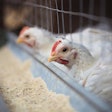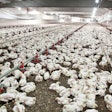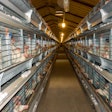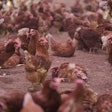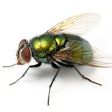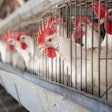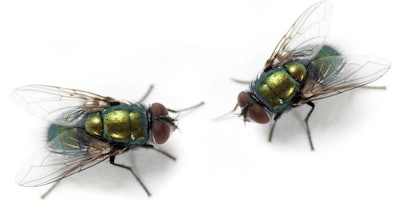
Much of the U.S. egg industry is gradually transitioning to cage-free housing for laying hens. Good pest management is an important part of an egg farm’s food safety program. Egg Industry Insight asked pest control specialist for advice on things egg producers should consider if they are transitioning operations from cage to cage-free housing.
Questionnaires were conducted with Cassie Krejci (MGK - Technical Specialist), Jason Price (Liphatech - National Technical Support Manager) and Andy Schoenherr (Motomco - Senior Product Manager) concerning how rodent and insect control programs will need to be modified as farms transition to cage-free.
This is part two of a three-part series and focuses the differences between pest control programs in cage-free houses and conventional houses.
Q1: What differences are there in rodent and insect control programs in cage-free pullet and layer houses when compared to houses with cages?
All three companies agreed that because birds are free to roam in cage-free house settings, baiting houses must be completely reevaluated when making changes to a pest control program.
Cassie Krejci, technical specialist, MGK, explained that litter build up and moisture accumulation can cause increased fly pressure inside a non-belted cage-free house. Additionally, cage-free housing allows birds to get closer to a greater number of birds in the flock. “This can exponentially increase the rate at which ectoparasites like mites, bed bugs and lice are transferred from bird-to-bird.” she stated. Krejci concluded that controlling pests often requires the application of insecticides on- or over-bird, and that difficulties arise in cage-free settings when birds are not evenly distributed in cages.
Andy Schoenherr, senior product manager, Motomco, clarified that producers should be extremely cautious in avoiding a situation where birds can access or consume any poisonous bait, as they have access to all parts of the house in cage-free environments. “Ultimately cage free houses simply have fewer locations where you can place bait and control rodents,” he explained. “With conventional flocks, you can put traps or bait stations on the inside and still access them for regular servicing, which becomes much more difficult in a cage free environment.”
Jason Price, national technical support manager, Lipatech, stated, “The difference is you have to have a more thought-out baiting procedure program and your bait station placements have to be selective when to trying to prevent birds in a cage-free house from coming in contact with the bait.” Therefore, because the birds can roam freely in cage-free housing, the length of the house or between the cage rows can no longer be baited as before.
Q2: When the new cage-free layer or pullet house is first populated, is there anything that egg producers should pay particular attention to?
Kerjci found that regardless of house age or cage system, it is critical to inspect the birds coming in prior to placement. “Ectoparasites like mites, bed bugs and lice can arrive on birds or cages and catching these pests prior to their entrance can be a substantial cost-saver. After investing in innovative production systems, the last thing anyone wants to do is halt production to perform a full clean out of a brand-new barn,” she stated.
Schoenherr explained that new buildings, cage-free or not, should be relatively rodent free when first populated. “During transition periods is one of the most critical times to knock down populations because there’s no risk to animals and competing food sources have been removed,” he stated. “It’s also helpful to find and seal any holes or cracks that rodents might use to get in, as well as thoroughly cleaning areas that might attract rodents, and wiping out bait stations.”
Price confirmed that once the house’s new structure is complete, the pest control program should already be in place and working. “They will need to have their bait stations in place and baiting well prior to bird placements. The bait station placements for mice should be 8-12 feet apart and the bait station placements for rats should be 15-30 feet,” he said.







